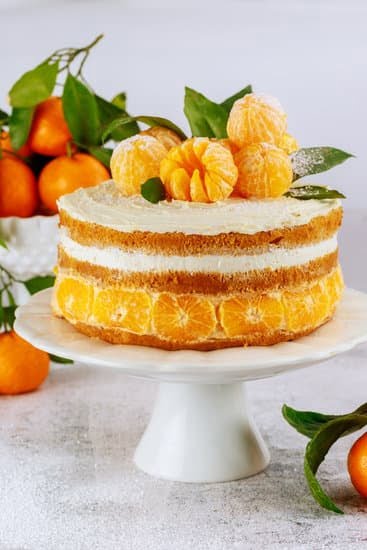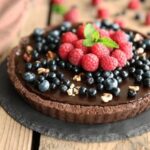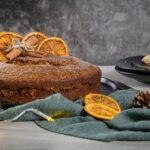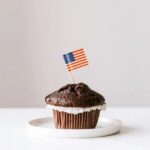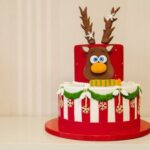Cake decorating is more than just a way to make a cake look pretty – it is the ultimate expression of cake love. The artistry and beauty behind cake decorating allow for personalization and creativity, making each cake a unique masterpiece.
Whether you are a beginner or an experienced decorator, understanding the importance of decorating tips can help you achieve professional results. In this article, we will explore the world of cake decorating and delve into various techniques, tools, and ideas to help you express your love for cake through beautifully decorated creations.
Cake decorating is not only about adding frosting and sprinkles; it is an opportunity to showcase your artistic talent and create something truly extraordinary. The process allows you to transform a simple cake into a work of art that tells a story or captures a special moment. With the right tools and techniques, you can unleash your creativity and turn any ordinary cake into an edible masterpiece.
One crucial factor in achieving professional results in cake decorating is understanding the different types of tips that are available. These small metal nozzles play a significant role in creating various designs, from intricate patterns to smooth textures. Choosing the right tip can make all the difference in achieving your desired outcome. Throughout this article, we will dive deeper into these tips and their purposes, helping you elevate your designs with ease.
So whether you are new to cake decorating or have been practicing for years, by embracing your love for cakes and exploring the world of decorating tips, you can take your creative endeavors to new heights. Get ready to embark on an exciting journey filled with inspiration, technique mastery, troubleshooting solutions, expert advice, and beginner-friendly tips. Let’s delve deeper into the art of cake decorating and uncover ways to express our love for cakes through beautifully adorned creations.
Understanding the Basics
Cake decorating is a creative and artistic endeavor that allows individuals to express their love for cake in a visually stunning way. In order to achieve professional results, it is essential to have the right tools at your disposal. This section will delve into the essential tools for cake decorating and provide tips on selecting high-quality equipment.
One of the most important tools for cake decorating is a piping bag. Piping bags come in various sizes and materials, such as disposable plastic or reusable cloth. They allow you to control the flow of icing or frosting onto the cake, creating intricate designs and patterns. Additionally, different types of piping tips can be attached to the end of the bag to achieve specific effects, such as creating decorative borders or writing messages.
Another indispensable tool is the spatula, which helps with spreading and smoothing icing onto the cake’s surface. It is beneficial to have both a large one for covering larger areas and a smaller offset spatula for detailed work. A turntable is also essential for easily rotating the cake while decorating, ensuring even coverage and precision.
When it comes to selecting decorating tips, there are numerous options available for different purposes. Round tips are commonly used for writing or outlining designs, while star tips can create beautiful rosettes or piped flowers. Leaf tips are perfect for adding foliage to floral decorations, and petal tips are ideal for creating lifelike flower petals. By understanding the different types of decorating tips and their purposes, you can expand your creative possibilities.
When investing in decorating tools, it is important to select high-quality equipment that will last and produce better results. Look for sturdy piping bags that won’t burst under pressure and durable metal tips that won’t rust or bend easily. It may be worth spending a bit more on quality equipment as they tend to provide better control and precision.
By understanding the basics of essential tools for cake decorating and making informed choices about your equipment, you’ll be well-prepared to embark on your cake decorating journey. These tools will serve as the foundation for the beautiful designs you will create, allowing you to express your love for cake in an artistic and visually stunning way.
Mastering the Art of Icing
Introduction:
Mastering the art of icing is a crucial skill for achieving smooth and flawless cake surfaces. The way icing is applied can significantly impact the overall appearance of the cake, making it look professional and polished. In this section, we will explore step-by-step techniques to achieve a perfectly smooth icing on cakes, insider tricks to prevent air bubbles and uneven surfaces, and different types of icing mediums.
Step-by-Step Guide:
To start mastering the art of icing, it is essential to have a well-leveled cake. Uneven surfaces can make it challenging to achieve a seamless finish. Once your cake is level, you can begin by applying a crumb coat – a thin layer of icing that seals in any loose crumbs and creates a smooth base for the final layer. Using an offset spatula or bench scraper, spread a thin layer of icing all over the cake, ensuring even coverage.
After applying the crumb coat, place your cake in the refrigerator for about 15-20 minutes to allow it to firm up. This will make it easier to apply the final layer of icing without disturbing the crumb coat. Using an offset spatula or a straight-edge bench scraper held at a slight angle against the side of the cake, spread an even layer of frosting around the sides while rotating the turntable.
Insider Tricks:
One common challenge when applying icing is air bubbles forming between layers or on top of the cake’s surface. To prevent this, gently tap your cake against your counter after each application of frosting. This helps release any trapped air bubbles and creates a smoother finish.
Another insider trick is using hot water to warm up your spatula before smoothing out the final layer of frosting. This helps create an ultra-smooth surface by melting any imperfections as you glide over them with the warmed spatula.
Exploration of Different Icing Mediums:
Different types of icing mediums can offer unique effects on overall cake appearance. For example, buttercream icing can create a classic and homestyle look with its soft texture and smooth finish. On the other hand, ganache adds a rich and glossy touch to cakes, ideal for decadent creations.
It’s also worth mentioning fondant, a versatile icing medium that allows for intricate designs and flawless surfaces. Fondant provides a smooth canvas that can be shaped, draped, or used as a base for various decorations. It’s important to note that mastering the art of working with fondant requires practice and patience.
| Techniques | Tips |
|---|---|
| Apply crumb coat | Ensure even coverage |
| Tap the cake against counter | Release air bubbles |
| Warm spatula with hot water | Create an ultra-smooth surface |
| Fondant | Allows for intricate designs and shaping |
Elevating Your Designs
Cake decorating is not only about making a cake look presentable, it is a true form of artistry that allows for personalization and creativity. In this section, we will explore different creative cake decorating ideas that will elevate your designs and leave a lasting impression on anyone who sees or tastes your cakes.
One popular technique in cake decorating is piping. Piping involves using a piping bag fitted with various tips to create intricate designs on the cake’s surface. Some common piping techniques include borders, rosettes, ruffles, and writing. With piping, you can let your imagination run wild and create unique patterns and shapes that showcase your skills and personal style.
Another technique that can take your cake designs to the next level is fondant. Fondant is a smooth, pliable icing-like covering that can be rolled out and draped over the cake’s surface. It allows for clean lines, sharp edges, and intricate details that are hard to achieve with buttercream alone. Fondant is particularly popular for creating themed cakes or cakes with sculpted designs.
Edible decorations are also great for adding an extra touch of creativity to your cakes. You can use edible flowers, sprinkles, pearls, or even hand-painted designs to make your cakes stand out. These decorations not only add visual interest but also enhance the overall taste experience.
To provide you with some inspiration for your cake decorating journey, here are some examples of unique cake designs:
- A whimsical unicorn cake with pastel-colored buttercream icing and fondant accents.
- An elegant wedding cake adorned with delicate sugar flowers cascading down the tiers.
- A vibrant abstract art-inspired birthday cake featuring bold colors and geometric patterns.
- A playful children’s birthday cake shaped like their favorite cartoon character with detailed fondant work.
- A sophisticated ombre effect on a tiered cake achieved through layering shades of frosting.
Remember that creativity has no limits when it comes to cake decorating. Don’t be afraid to experiment with different techniques, textures, and flavors. Taking risks and challenging yourself will lead to unique creations that reflect your personal style and love for cake decorating.
| Cake Decorating Technique | Description |
|---|---|
| Piping | Create intricate designs using a piping bag fitted with various tips |
| Fondant | Smooth icing-like covering for clean lines, sharp edges, and intricate details |
| Edible Decorations | Add visual interest with edible flowers, sprinkles, pearls, or hand-painted designs |
Taking It to the Next Level
Once you have mastered the basics of cake decorating, it’s time to take your skills to the next level with advanced techniques. These techniques will allow you to create intricate and impressive designs that will truly wow your friends and family. In this section, we will explore some advanced cake decorating techniques and provide step-by-step instructions to help you achieve these stunning decorations.
One advanced technique that can elevate your cake designs is creating buttercream flowers. Buttercream flowers not only add a touch of elegance to cakes but also allow for endless creativity and customization. To create these beautiful flowers, start by preparing different shades of buttercream in piping bags fitted with petal tips.
Begin piping petals onto the cake, layering them to create a realistic flower shape. Experiment with different flower types such as roses, peonies, or daisies to add variety to your designs.
Sculpting is another advanced technique that can take your cake decorating skills to new heights. Sculpting involves shaping the cake into various forms such as animals, objects, or even people. To sculpt a cake, begin by carving the desired shape from a large block of cake using a serrated knife or specialty carving tools. Once you have achieved the basic shape, use buttercream or fondant to add details and bring your sculpture to life.
Gravity-defying designs are sure to impress any audience and are perfect for special occasions like birthdays or weddings. These designs give the illusion that certain elements of the cake are floating or defying gravity. To achieve this effect, use sturdy materials such as dowels or hidden supports within the structure of the cake. With careful planning and execution, you can create mesmerizing cakes that leave everyone in awe.
By exploring these advanced techniques and practicing them regularly, you will continue on your journey towards becoming an expert cake decorator. Remember that it takes time and patience to master these skills, so don’t be discouraged if you don’t achieve perfection right away. The key is to embrace the process and enjoy every step of the way. So go ahead, challenge yourself, and let your creativity soar with these advanced cake decorating techniques.
Troubleshooting Common Cake Decorating Issues
Cake decorating can be a wonderful and rewarding experience, but it’s not without its challenges. From bulging to cracking and smudging, there are various issues that can arise during the decorating process. However, with a little know-how and some handy tricks up your sleeve, you can easily overcome these common cake decorating dilemmas. In this section, we will identify some of the most common challenges and provide solutions to help you troubleshoot them.
- Bulging: One of the most frustrating problems in cake decorating is when the layers of your cake start to bulge out from the sides. To prevent this from happening, it’s crucial to properly level and stack your cake layers.
Make sure each layer is flat before adding filling or frosting between them. Another helpful tip is to chill your filled cake before applying the final coat of icing to firm up the layers and reduce the risk of bulging. - Cracking: Cracks in your icing can take away from the overall appearance of your cake. One possible cause of cracking is an overly dry environment that causes the top layer of icing to dry too quickly while the inside remains moist. To avoid this issue, try using less powdered sugar in your buttercream recipe or add a small amount of corn syrup or glycerin to increase moisture retention.
- Smudging: Smudges on your beautifully decorated cake can be disheartening. This issue is often caused by handling the cake too much or having warm hands during decoration. To prevent smudging, make sure to thoroughly chill your cake before decorating it. Additionally, consider wearing food-grade gloves or using an offset spatula for delicate details that require minimal contact.
Remember, practice makes perfect. If you encounter any other issues along your cake decorating journey, don’t get discouraged – it happens to even experienced decorators sometimes. The most important thing is to have patience and enjoy the process of creating edible masterpieces with love.
Pro Tips from Expert Cake Decorators
Introduction: Gaining Insights from the Best in the Business
Cake decorating is an art form that requires skill, creativity, and a passion for all things sweet. To provide readers with valuable insights and inspiration, we have interviewed renowned cake decorators who have made a name for themselves in the industry.
In this section, we will delve into their expertise and techniques to help you elevate your cake decorating game. Whether you are a beginner or an experienced decorator, these pro tips are sure to enhance your skills and make your creations even more impressive.
Gaining Inspiration from the Masters
Our interviews with expert cake decorators offer a unique opportunity to gain insight into their creative processes and learn from their years of experience. From innovative techniques to unexpected sources of inspiration, these artists share their tips and tricks for creating show-stopping cakes. By delving into their minds, you’ll be able to expand your horizons as a cake decorator and explore new possibilities in your designs.
One common thread among these experts is their unwavering love for cake decorating. They emphasize the importance of investing time, effort, and passion into each creation. Through our interviews, you’ll discover how they infuse their own personality and style into every cake they design, allowing them to stand out from the crowd. The advice they impart will inspire you to think outside the box, take risks, and embrace your love for cake decorating.
Discovering Favorite Decorating Tips and Tricks
In our exclusive interviews, we asked each expert about their favorite decorating tips and tricks that have helped them achieve professional results consistently. From achieving perfectly smooth icing surfaces to intricate piping designs, these professionals provided invaluable insights that can transform your own creations.
Additionally, they shared some lesser-known techniques that may surprise you. These include tips on utilizing unconventional tools or experimenting with different mediums to add texture or dimensionality to your cakes. By incorporating these expert-approved techniques into your own repertoire, you can take your cake decorating skills to new heights.
In the following sections, we will delve deeper into our interviews with these outstanding cake decorators. Each interview offers a glimpse into their journey, their favorite tools and materials, as well as their artistic process. By learning from these masters of cake artistry, you will be able to further nurture your love for cake decorating and create edible masterpieces that leave a lasting impression.
Cake Love Decorating Tips for Beginners
Cake decorating is an art form that allows individuals to express their love for cake and create beautiful edible masterpieces. For beginners who are just starting their journey into the world of cake decorating, it can be overwhelming to know where to begin. This section will provide a step-by-step guide with tips specifically tailored for beginners, helping them develop the skills and confidence needed to create stunning cakes.
Start with the Basics
Before diving into intricate designs and advanced techniques, beginners should focus on mastering the fundamentals of cake decorating. This includes understanding how to properly prepare and ice a cake, as well as familiarizing themselves with essential tools such as piping bags, tips, spatulas, and turntables. It’s important to invest in high-quality tools to ensure optimal results.
Practice Piping Techniques
Piping is one of the most common techniques used in cake decorating, and beginners should devote time to practicing different piping styles and patterns. Start with simple designs using a round or star tip, gradually progressing to more complex patterns like rosettes or shells. Practicing consistency in pressure and movement will help achieve clean lines and professional-looking decorations.
Embrace Fondant
Fondant is a versatile medium that allows for endless creativity in cake design. Beginners should start by covering cakes with fondant, ensuring a smooth finish by rolling it evenly with a fondant roller. Experimenting with different colors and textures can add depth and visual interest to cakes. Basic fondant decorations such as bows or flowers can also be easily learned by following online tutorials or attending beginner-friendly classes.
Seek Inspiration
Don’t be afraid to seek inspiration from other cake decorators or take reference from various sources such as books, magazines, or online platforms dedicated to cake decorating ideas and designs. Analyzing these creations can help beginners understand different techniques and inspire their own unique creations. It’s important for beginners to remember that creativity comes from within, and adding personal touches and themes to a cake can make it truly special.
Be Patient and Practice
Cake decorating is a skill that requires patience and practice. Beginners should not be discouraged if their first attempts do not turn out as expected. It takes time to develop the necessary techniques and gain confidence in decorating cakes. The key is to keep practicing, experimenting, and learning from mistakes along the way.
By following this step-by-step guide, beginners can begin their cake decorating journey with confidence and passion. With dedication, practice, and love for cake, even the most novice decorators can create stunning edible creations that will impress friends and family. Remember, cake love is expressed through beautifully decorated cakes, so embrace the process and enjoy every moment of creating something special.
Conclusion
In conclusion, cake decorating is truly the ultimate expression of cake love. Throughout this blog post, we have explored the beauty and artistry behind cake decorating, as well as the personalization and creativity it allows for. We have also highlighted the importance of using high-quality decorating tools, mastering the art of icing, and elevating designs to create unique and stunning cakes.
Whether you are a beginner or advanced decorator, there is always room to grow and learn in the world of cake decorating. From troubleshooting common issues to seeking inspiration from renowned artists, there are endless opportunities to perfect your skills and express your love for cake through beautifully decorated edible masterpieces.
It is important to remember that cake decorating is not just about the final product, but also about enjoying the process. Experimenting with different techniques, practicing regularly, and embracing your creativity will ultimately lead to stunning results. So don’t be afraid to try new things, incorporate personal touches into your designs, and most importantly, have fun while expressing your cake love through decorating.
Frequently Asked Questions
How do I get good at cake decorating?
To get good at cake decorating, practice is key. Start by baking simple cakes and work your way up to more complex designs as you improve your skills. Take a cake decorating class or watch tutorial videos online to learn different techniques and tips from experienced decorators.
Experiment with different icing recipes to find the one that works best for you in terms of taste and consistency. Don’t be afraid to make mistakes – they are a part of the learning process. Lastly, be patient with yourself and keep practicing regularly to hone your cake decorating abilities.
How do you know which piping tip to use?
Choosing the right piping tip largely depends on the desired outcome you wish to achieve with your cake decoration. Different piping tips create varying shapes, textures, and designs when used with icing or frosting. For fine details and delicate work such as writing or intricate patterns, small round tips like #1 or #2 are suitable choices.
Larger round tips like #5 or #7 are great for creating borders or filling large areas quickly and effortlessly. If you intend to pipe flowers or ruffles, petal tips such as #103 or #104 will give you that lovely effect. It’s also helpful to experiment with different piping tips on a practice surface before using them directly on a cake, allowing you to see how each tip behaves.
How do you use Wilton cake decorating tips?
Wilton cake decorating tips are commonly used by both professionals and hobbyists for their versatility and quality performance. To use Wilton tips, start by ensuring that your tip securely fits into the piping bag coupler (if using) as this will prevent any leaking or shifting during decorating. Insert the chosen tip into the end of a disposable or reusable pastry bag, applying gentle pressure until it is fully inserted into place without any gaps around it.
Fill the bag with your desired frosting or icing, then apply steady pressure while squeezing from the top down onto the frosting bag to achieve an even flow through the tip. Practice maintaining consistent pressure as well as adjusting the speed and angle of your hand movements to control the design being piped. Clean the tip after use to remove any remaining frosting and ensure its longevity.

Welcome to our cake decorating blog! My name is Destiny Flores, and I am the proud owner of a cake decorating business named Cake Karma. Our mission is to provide delicious, beautiful cakes for all occasions. We specialize in creating custom cakes that are tailored specifically to each customer’s individual needs and tastes.

